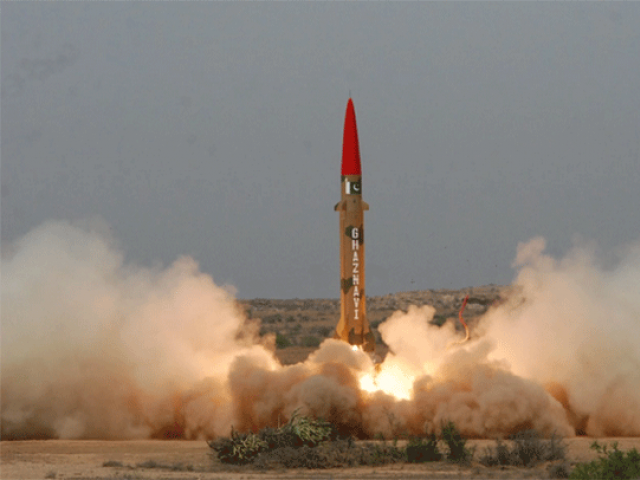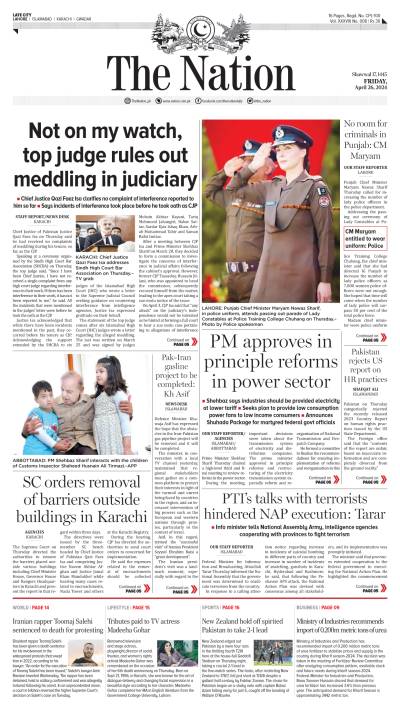According to “A Normal Nuclear Pakistan”, a recent report co-authored by Michael Krepon and Toby Dalton published by The Stimson Center and the Carnegie Endowment, Pakistan could have close to 350 nuclear weapons by 2025. The key word here is “could.”
It is no secret that Pakistan faces many internal challenges. For nearly the past decade, our economy has been a mess, our armed forces have been engaged in combating terrorism, and our society has been plagued by a host of problems like unemployment, illiteracy, access to clean water, lack of affordable healthcare, and so on and so forth. But to presume, as I perceive the authors have in their report, that our armed forces are taking money from social programs and diverting it for military purposes is inaccurate.
The fact is that according to government documents our defense budget has hovered around 2.6 percent of the GDP for the last few years; it is also the lowest percentage of our GDP since independence. Even with the current, declared budget at $7.6 billion (compared to India’s $40 billion or America’s $585 billion), our military has a hard time making ends meet. We have invested all of our resources in the war against terror as a frontline state. Strictly financially speaking, it would be impossible for us to develop two-hundred-some nuclear warheads in the next ten years.
The authors have urged Pakistan to consider adopting five initiatives related to the nuclear weapons program:
Shift declaratory policy from “full spectrum” to “strategic” deterrence.
Commit to a recessed deterrence posture and limit production of short-range delivery vehicles and tactical nuclear weapons.
Lift Pakistan’s veto on Fissile Material Cutoff Treaty negotiations and reduce or stop fissile material production.
Separate civilian and military nuclear facilities.
Sign the Comprehensive Test Ban Treaty without waiting for India.
On the first initiative, I would argue that there is no difference between “full spectrum” and “strategic” deterrence. Pakistan has always maintained a minimum-credible deterrence posture, but as India continues to modernize their weapon systems and expand their nuclear capabilities, Pakistan is forced to respond, so as not to leave a gap.
Western scholars need to understand that the weapons they consider to be tactical play strategic role in the context of India and Pakistan, because of our geographic proximity. I agree with the authors that we do not need more nuclear weapons than is required to maintain a minimum credible deterrent, which is Pakistan’s stated policy.
Pakistan’s stance on the Fissile Material Cutoff Treaty (FMCT) is easy to understand. The argument Pakistan makes is that the FMCT, as it is being discussed, does not address the existing stockpiles of fissile material that other countries possess. A treaty that doesn’t address existing stockpiles would put Pakistan at a huge disadvantage vis-a-vis India, which is believed to have a far larger stockpile of fissile material. Therefore, lifting our veto on FMCT would not serve our national security interests. Furthermore, it would be advantageous if the international community focused more on complete disarmament rather than the FMCT.
It is also essential to recognize that though Pakistan is the only country to have officially vetoed the treaty, other countries like India are glad about it, because the treaty is not acceptable to them either.
There is no question that Pakistan should separate civilian and military nuclear facilities. This is something that our military and political leadership has also worked towards. For this reason, all of our civil nuclear reactors are under item-specific IAEA safeguards, and I hope that we also sign onto the additional protocols that India has if we are offered a civil nuclear deal similar to the one they enjoy.
On the last initiative that this report recommends, which is signing the Comprehensive Test Ban Treaty (CTBT) without waiting for India, I agree. We must appreciate that Pakistan has plans to operate two monitoring stations to detect nuclear tests as per the requirements of the CTBT, which is something that India has not done. Realistically, I can foresee Pakistan signing onto the CTBT, if the United States were to lead the way by ratifying it.
This report was very insightful and offered some wonderful recommendations that will help Pakistan in the near future, but has also created media frenzy.
I would urge the media to refrain from exaggerating the findings of this publication. I have already come across multiple headlines calling Pakistan the third largest nuclear weapons state, which the Carnegie-Stimson report does not argue. The numbers of nuclear weapons that Pakistan could develop in the future, as suggested in the report, are made on the assumption that we will use our entire fissile material stockpile for weapons development. This is speculative. Pakistan, like India, has an energy crisis, and our current government has made clear that nuclear energy will play a large role in the future of our country. Keeping that in mind, it is my opinion that it is likely a significant amount of our existing stockpiles of fissile material will be used for producing electricity, not weapons.
In conclusion, Pakistan’s nuclear weapons have proven their efficacy by deterring Indian aggression. As long as India possesses nuclear weapons and continues expanding its capabilities, Pakistan will be forced to invest in maintaining a minimum credible deterrent, which needs to be full spectrum.






